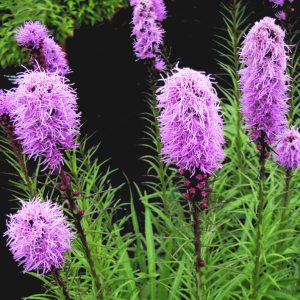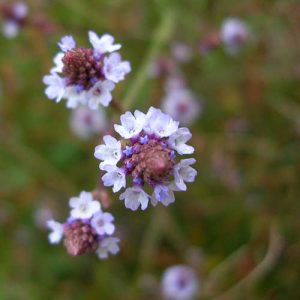- 1-9 pkts $4.50
- 10 pkts FREE
- Express post $12
Aquilegia oxysepala
ORIENTAL COLUMBINE
Aquilegia oxysepala is a special Columbine, with unique and lovely colouring.
Unusual wine skirts & lemon petticoats
Blooms have wine maroon outer skirts (sepals) and soft lemon petticoats (inner petals).
While the spurs are shot and curled like little Pomeranian tails.
The flowers are enchanting.
Larger than usual Columbine heads
With larger than normal branching heads of flowers, held on taller than usual flower stems (up to 80cm. tall) – so each plant puts up an great show of dancing blooms like twirling ballerinas high in the air.
Prolific displays of flowers spring into summer
Aquilegia oxysepala blooms prolifically from spring into summer.
With its unusual colouring and big, branching heads of bloom – it can steal the show.
Hardy evergreen perennial clump
This Oriental Columbine forms a hardy, evergreen, rounded perennial clump of attractive scalloped leaves.
Clumps make excellent groundcover all year round.
Copes with humid summers well
No prizes for guessing the Oriental Columbine is native to woodlands and grassy clearings in the Far East, through Korea, China and Japan.
So it is well adapted to humid summers.
Also frost hardy
As well as cold, frosty winters.
Dry shade tolerant
Aquilegia oxysepala can also tolerate dry shade well, once established.
So they can happily grow in the shade of trees untended.
Plant Aquilegia oxysepala in Shade to ½ Shade fand Dappled Light for preference.
Though they can also tolerate more sun in cooler climates, and especially when they are mulched for summer.
Useful for florists & lovely colouring for bouquets & arrangements
Aquilegias are very charming in bouquets and floral arrangements.
And Aquilegia oxysepala is especially coveted because of the unique and stylish colouring.
To give the cut stems maximum vase life – First sear the stem ends in boiling water or with a match, and then stand them in deep cold water for several hours before using in an arrangement.
Thumbs its nose to rabbits & deer
Rabbits and deer shun Aquilegia oxysepala, as they pass by to tastier fodder.
Friendly to many pollinators, bees & birds
Aquilegia flowers are rich in both pollen and nectar – so they serve a wide range of pollinators.
Honey bees and native bees both love foraging amongst the flowers, and are particularly attracted to the blue and purple varieties.
While moths and butterflies are also frequent visitors, with white and pale Aquilegias favourites for night flying moths.
Our small, native honey eating birds are also delighted to sip nectar whilst perched on the branching stems.
Evergreen perennial clump
Aquilegia oxysepala forms an evergreen perennial clump.
Approx. 80cm High with large branching heads of Columbine flowers 30cm Wide attractive foliage clump.
SEED SOWING ADVICE:
Sow any time indoors in punnets, when suitable temperatures can be provided (15-20°C).
OR
Scatter directly in garden in autumn and winter.
Aquilegias germinate easily in the garden after winter chilling.
Sow indoors for quick & early plants: First sow the seeds in a punnet on the surface of good quality seed raising mix.
Barely cover the seeds with sieved mix, because these seeds need light to germinate,
Now thoroughly moisten the sown punnet by standing it in a shallow water bath and allowing the moisture to percolate to the surface of the mix from below.
Then place in a warm, well-lit position (not in any direct sunlight).
Temperatures of 15- 20°C. are ideal for rapid and optimum germination.
You can use a heated mat if you have one, to maintain suitable temperatures.
Now continue to keep consistently moist by misting regularly with a spray water bottle.
A clear plastic cover or bag will also help to maintain consistent moisture.
Seeds germinate in 10-30 days.
However if there is no germination in 4 weeks, then it means the seeds have entered their natural dormancy.
So cling-wrap the moist, sown punnet and keep it in fridge (not freezer) for 4-6 weeks.
Then return to the well-lit position at 15-20°C.
Seedlings may begin to germinate in 10 days.
But do not discard the punnet as some seeds will continue to germinate for up to 30-90 days.
And this is perfectly natural for this plant.
Seed Count: 30 seeds per pack approx.
(We always aim to exceed the stated seed count and give a generous serve).
Click here for Nursery Open Days & Open Gardens Information
https://www.gardivalia.com.au/open-gardens
Click here to go back to Seeds Shop
https://www.seedscape.net.au/shop/
Related products
-
Add to WishlistAlready In WishlistAdd to Wishlist
-
Add to WishlistAlready In WishlistAdd to Wishlist
-
Add to WishlistAlready In WishlistAdd to Wishlist
-
Add to WishlistAlready In WishlistAdd to Wishlist





